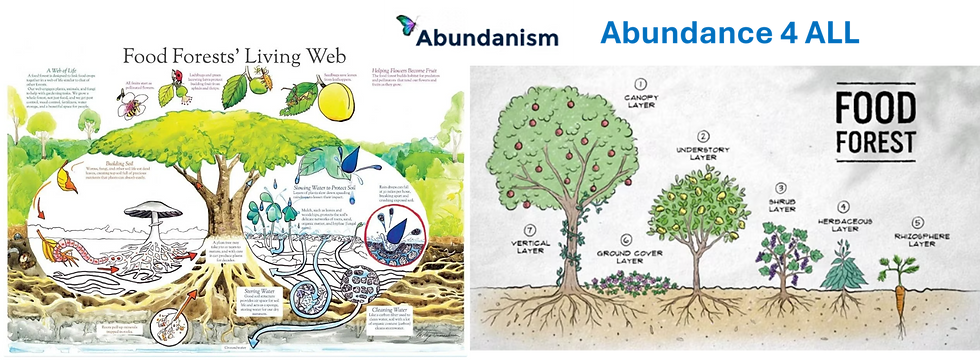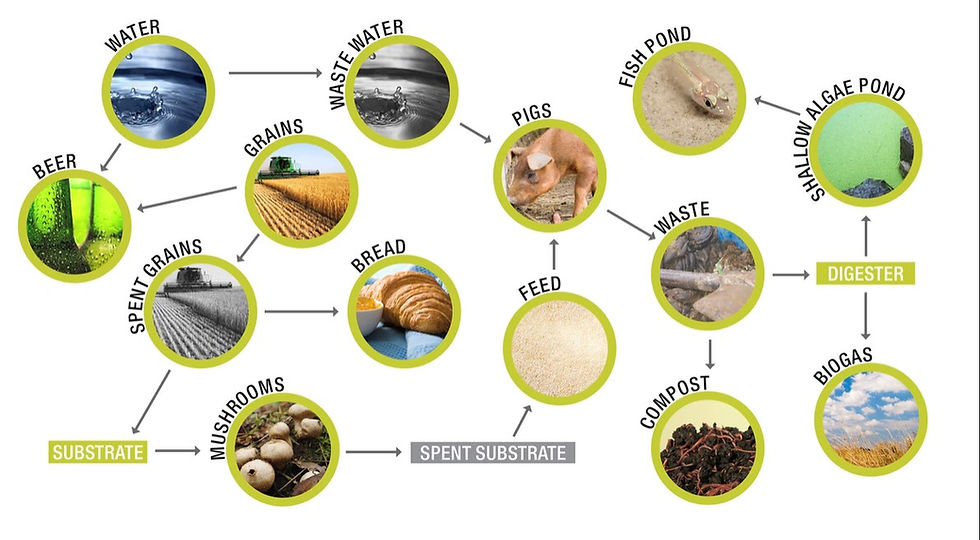Easy Systemic Design - The Vortex
- Desiree Driesenaar
- Apr 30, 2022
- 6 min read

Last autumn, I went swimming in the Greek sea. I'm a kind of a mermaid, so I love to swim in open waters. Rivers, lakes, oceans, and seas. It is as if the water and all her inhabitants talk to me. Give me snippets of wisdom. And make my body flow, flow, flow.
The best bit is floating on the water for me. Pure relaxation on my back. The water tension carries me without any trouble. It makes me feel safe. However, last autumn, I remembered someone telling me about vortexes. And how they can drag you down.
Luckily, I also remembered the solution. Relaxed and surrender. Instead of being dragged down into the rabbit hole, you'll be automatically transported to the broader part. And the centrifugal forces will do the rest. They'll spit you out on the side and you'll be free.
It's a good thing to remember.
Relax and surrender.
VORTEX MODEL
Today, we want to take you on a journey with out Vortex model. Whow you how it can work to add simplicity to complexity. And we invite you to start experimenting with this model. After all, our world is a poisoned mess, failing to solve human poverty.
We can do better than that! We need better human systems. Let's dive into the deep end right away and show you the model.

The Vortex method is uniquely developed by the think-and-do-tank Abundanism from the combined knowledge of systemic design methods within Biomimicry, Blue Economy, and the Regeneration.
We share everything open source to give you the opportunity to add it again to your own methods and make sure we redesign as many systems as possible in the world. The time is now. The time is right. We are in a huge shift of paradigm.
Does the Vortex look doable? We use The Vortex model to redesign energy systems for instance. Or mobility. We redesign cities. And rural areas. We design business models based on good margins and adequate access for people and other living beings.
At this moment, I'm even designing a society of trust with one of my clients. And every system turns out different because of the circumstances and environment. Different values. Different ecosystems and different cultures.
How does it work in detail? We start at the center with the smallest part. Often one citizen. Or the person who wants to redesign her personal life. Or one building (in case of energy). And we work outwards. Always nested. Always distributed. Always conscious.
The first layer is about values. We work with three values. Life. Health. Freedom for all living beings. This last one might be a bit confusing for people. What is freedom? Well, we don't like to limit anyone, we are all about abundance. So, we mean autonomy. Combined with responsibility for her or his actions.
Our clients sometimes want to add other values. Like trust. Or joy. Or love. Or any other value they like to keep in mind while designing.
The second layer is always the biome. What is a biome? It's the natural ecosystem combined with human culture. Do we only design local systems? No, not really. We do like to ground our systems in the soil, the mountain, or the sea. But it's not necessary. We can design systems for online communities too.
The third, fourth, and fifth layers get names that fit the kind of system we are designing. And inside these layers, we will come across many things that are already around us. We connect as many dots as possible, keeping in mind which automatic triggers are now leading us astray. And then we move on to the next layers.
We work with three values. Life. Health. Freedom for all living beings.
Let's give you some examples.
EXAMPLES
An energy system starts with one building. One house or one factory. Inside that house, or the factory we will look at all possibilities to be as self-sufficient as possible.
We will design a factory like a forest. A production system like a whale's heart. Perhaps the pipes can be helping the pump to make flow happen more easily? In a normal house, we'll install a 12-24V DC grid, connected to local solar panels, so no transformation is needed. In all the layers, we optimize supply and demand. Going wider all the time.
In our projects, we are zooming out and zooming in a lot. And we always look for upstream solutions before we move downstream again.
What do I mean by upstream?
In our current world, we are most of the time just putting plasters on big festering wounds. But if we want to change things for real, we have to go deep. Look beyond just symptoms and go to the core. The eye of the vortex.
What do we do now? We have a COVID virus and we only think of social distancing, a cure, and a vaccine. Okay. No judgment. But we also know that the people who die have underlying health issues. Weak lungs. So upstream means we go to the weak lungs. We stop air pollution. We stop smoking. We give people all the tools they need to have healthy immune systems.
It would mean we don't confine you to your house. Indoor climates are often toxic because of off-gassing glues, paints, and chemical fire-retardants. We would suggest you go walking outdoors. Breathe in the fresh air. Get some movement. Do some outdoor sports.
A biome is It's the natural ecosystem combined with human culture.
Very good for your mental health too. Go gardening. Put your hands in healthy soil so the microbes in your bodies will increase in diversity. Microbes balance each other out. Bacteria fight viruses and the other way around. So, instead of disinfecting your hand, you will just practice normal hygiene.
Wash your hands before eating. And after pooping.
And be mature in giving each other space. Wear a mask if logical in certain surroundings. Take your distance in the supermarket. No one wants to have another person breathing down your neck.
It's common sense. We do need space. But we also need a hug at times.
But hospitals need to be sterile, don't they? Yes, they do! So, we make hospitals sterile with biomimicry surfaces instead of with chemicals. Cupboards, beds, and floors would be inspired by hydrophobe lotus leaves. Filthiness would not stick but be easily cleaned without aggressive chemicals. And colors and rounded shapes can return to hospitals to make them friendlier.
Upstream thinking means thinking out of the box, instead of staying stuck in old-school solutions that are no solutions at all.
THE NEXT TOPICS
We are in evolution as a human species. Homo sapiens exists now for 300,000 years. We went from using tools to full industrial production with some horrible consequences of poisoning our environment, and increasing inequality between biomes and citizens.
Now, it's time to move on.
We have to go from scarcity (only scarce things are valuable) to abundance. We have to connect as many dots as possible in a layer. We have to include microbes, fungi, and the cyclic nature of our planet into our systemic designs. And we have to move from closed, mechanical systems to open living systems.
Including heart, soul, color, and quality in all we do.
The next steps in our evolution are:
Additive manufacturing with minimized materials and without shipping stuff around the world
Going from mining to phytomining in biodiverse agroforests
Moving away from geopolitics by starting small and scaling in fractals
Designing from the reality of our planet with microbes and fungi (those are very beneficial, by the way)
Creating cluster economies with multiple benefits and multiple income streams
Creating conscious business models based on good margins and access for people and other living beings who need your products
Digital design, cryptocurrencies, DAOs, and NFTs will give us really good opportunities for creating unconditional basic incomes and fair economies
For now, I hope you enjoyed this blog and I'm looking forward to many conversations about the why, how, and what of complexity and simplicity.
OFFERS
Our offers: personal conversations about systemic design for whatever topic. Design a system with The Vortex in five sessions of 1.5 hour over Zoom. Or come with a group and design one system together. The sessions are full of detailed knowledge further links for going deeper. All adapted to your wishes and your learning curve.
Go to services for details and prices. Our time is limited right now, so booking online has been disabled. Sorry for that. But contact us via desiree@driesenaar.nl and we'll discuss your wishes.




Comments